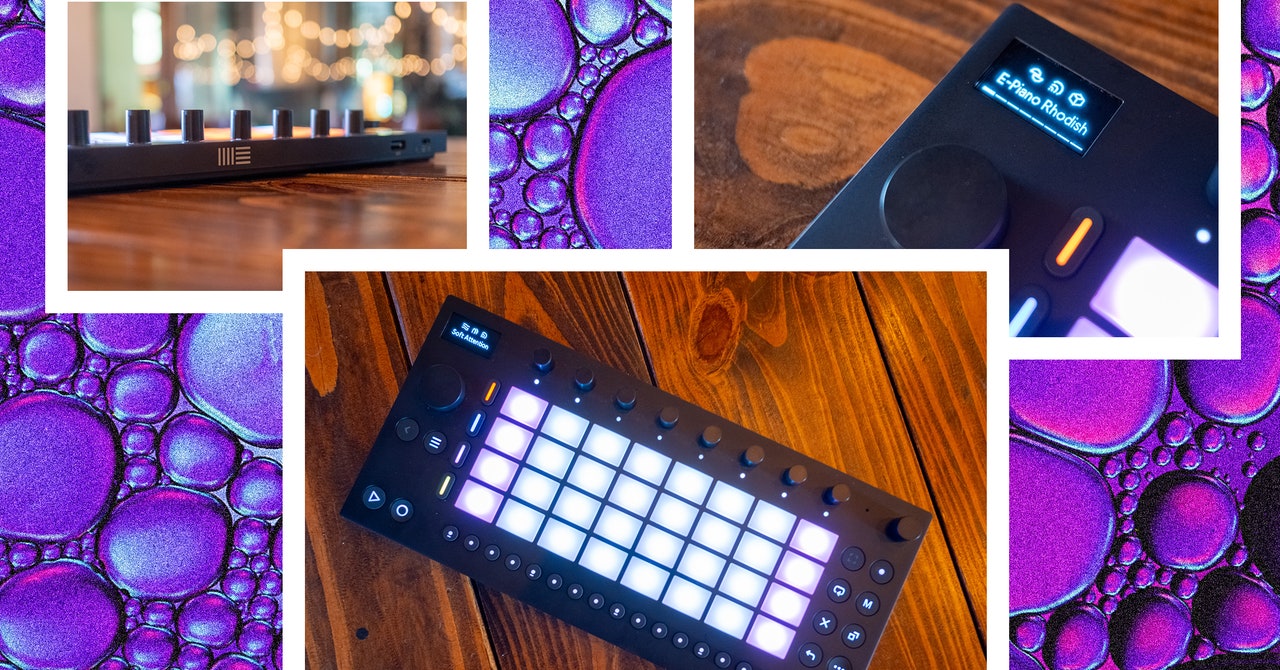
Drum Rack has its limitations, too. Pads have to make use of the brand new Drum Sampler, as a substitute of Less complicated, they usually can’t have particular person results chains. As a substitute any results want to use to the whole Drum Rack.
Your impact choice is fairly respectable. There are eight in whole: reverb, delay, saturator, redux, chorus-ensemble, phaser-flanger, channel EQ and dynamics (combo EQ and compressor). Every monitor can have two results, plus there are two grasp results
Connectivity is proscribed, however not overly so. There’s 3.5-mm audio in and outs plus a USB-A port for connecting an exterior MIDI controller for those who desire a keyboard to pads, and a USB-C port for charging that additionally permits you to use the Transfer as controller and audio interface with Stay.
Maybe most significantly, the Transfer connects to Wi-Fi, which is the way you get software program updates and handle units, samples, and presets (Drift and Drum Rack just for the second). It additionally permits you to backup units to Ableton Cloud and sync tempo with devices, DAWs and VSTs that assist Ableton Sync.
A Respectable Controller
Whereas Ableton is primarily pitching Transfer as a stand-alone machine, it could possibly additionally function a MIDI controller. Whereas it’s not practically as full-featured as Push, Transfer nonetheless has a ton of Stay-specific options that ought to make it interesting to anybody utilizing that DAW. For one, mapping of pads and encoders is all computerized for Ableton’s first-party plug-ins.
You’ll be able to’t use it to do fine-tuned enhancing of MIDI or to browse presets, however primary recording, looping and triggering of clips is all supported. As is Seize MIDI, which is nice for whenever you neglect to hit document or are simply noodling round and hit upon one thing you want. This takes the final bunch of notes you performed and dumps them right into a clip.
{Photograph}: Terrence O’Brien






